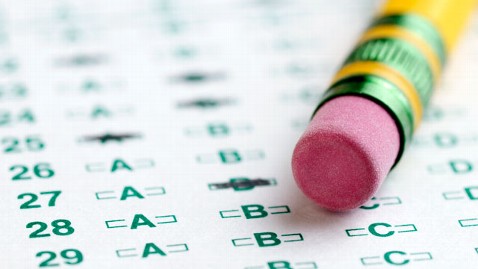College Readiness
Many students fail to meet the basic academic standard for admission to universities and colleges.

Every student must take the ACT or SAT to pursue a college education.
September 21, 2014
Many students set their aspirations for college acceptance very high. They fantasize about the classes they might take at an Ivy League school and how much better their future job opportunities will be with a decent college education. However, for more than half of them, their actual academic capabilities do not meet the requirements of those prestigious schools. For example, as stated by About Education, the lowest ACT score accepted by Harvard is a 31. However, according to ACT.com, the national average composite score last year on the ACT was a 21. This bleak 10 point differential causes a great barrier for students who yearned for a better opportunity academically and success in the job market after graduation.
The problem is quite obvious. High schools throughout this nation, are not adequately preparing their students for college level work. Many students fail to meet the basic academic standard for admission to universities and colleges.
This feeling of disillusionment has stemmed, in some people’s view, from the changes in curriculum. In an article from CollegeXpress, the problem in the educational system started with the deterioration of traditional curriculum. Teachers are no longer teaching at the same level of rigor as they once did. This trend created the “readiness gap.” This gap, as reported by the College Board, has caused a decrease in scores on both the SAT tests and AP tests by approximately 30%. Moreover, according to “US News”, about 60% of students failed to meet college standards in half of their subject tests. Clearly, a majority of students are not being taught the information required to excel.
So, how should schools fix the gap in college readiness? Some educators argue that the answer lies in the introduction of the Common Core. Others feel that high schools should focus on the individual needs of each student. Regardless of which theories you embrace, the problem will not be solved for the current graduating class of 2015. The “readiness gap” will be a rude awakening for many students, and for the most part, it is not entirely their fault.
Although the readiness gap is an immense problem in the United States, many students who strive to succeed in school are, indeed, somewhat prepared for college. The ACT defines college readiness by getting a 22 on the ACT, or in the 62nd percentile. This means that a little under half of the students taking the exam are not prepared for college level academic work. Therefore, students who apply themselves holistically are prepared for college.
Students at Glenbard South, on average, score a 23.2 on their ACT. By definition, a majority of South’s students are prepared for college. This achievement can be attributed to the overall drive of the students and the rigor that many teachers continue to apply to their courses.
As many of the seniors apply and get accepted to colleges, they must reflect upon themselves and question whether they are indeed prepared for college. And for those who are not ready for college, they must evaluate where they are academically and prepare strenuously for success in their higher education.






























